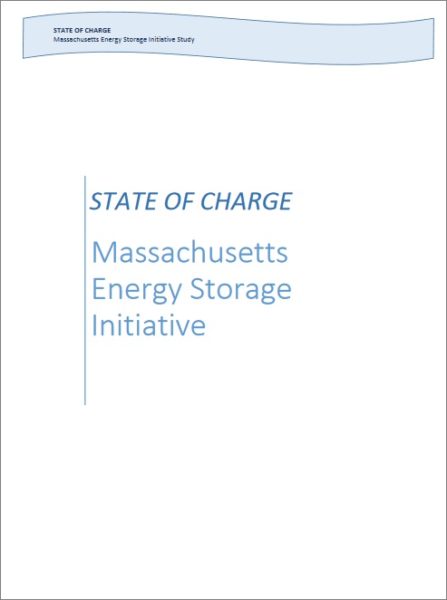November 2, 2016
Energy Storage Is the Next Clean Energy Revolution
By Seth Mullendore, Lewis Milford
 The next wave of America’s clean energy revolution is all about energy storage. Though rapid growth is anticipated, the battery storage market is still very small, with a few thousand projects around the country. Energy storage is currently where solar was a decade ago, but now there are over a million solar projects in the nation. To get to scale on storage, smart policies are needed. But so far, we have not seen a comprehensive state model to promote energy storage—that is, until now.
The next wave of America’s clean energy revolution is all about energy storage. Though rapid growth is anticipated, the battery storage market is still very small, with a few thousand projects around the country. Energy storage is currently where solar was a decade ago, but now there are over a million solar projects in the nation. To get to scale on storage, smart policies are needed. But so far, we have not seen a comprehensive state model to promote energy storage—that is, until now.
Earlier this year, Massachusetts took the lead with the country’s first comprehensive state plan on energy storage in a groundbreaking report called “State of Charge.” The report calls for the creation of new, multi-million-dollar grant and rebate programs to buy down the upfront costs of both utility-scale and distributed, customer-sited storage. And, it proposes investigating new ways for the regional transmission operator to compensate energy storage resources for the grid services they can deliver.
Energy storage can save utility customers significant money off their electric bills. When electricity is stored throughout the grid, it can flatten demand by allowing homes and businesses to run on stored power during high-demand hours. This also makes solar more economically attractive by allowing customers to use stored solar energy to avoid high utility demand charges or peak electricity pricing under time-of-use rates. Storage can also make the grid more reliable by storing intermittent renewable energy for when it is needed most, which can also enable greater growth of solar projects.
State of Charge found that Massachusetts ratepayers could benefit from storage deployments above and beyond California’s groundbreaking energy storage mandate, which is by far the largest in the country. A proposed investment of around $1 billion in energy storage by 2020 would create economic benefits of over $3 billion to the state’s ratepayers and customers. Neighboring states throughout the Northeast also would benefit from lower regional electricity market prices.
The Massachusetts plan also shows how storage can help states meet their greenhouse gas reduction goals. According to the study, large scale storage deployment could avoid more than 1 million metric tons of GHG emissions over 10 years in Massachusetts, the equivalent of removing more than 200,000 cars from the road.
The public health impacts of reducing emissions through energy storage deployment could be significant. A recent study out of California found that proper siting of energy storage could improve air quality by reducing the use of fossil-fuel peaker plants when electricity demand is high. This could have dramatic health benefits in the low-income communities where many of these fossil-fuel plants are located.
State of Charge recognizes that storage won’t provide these benefits without policy support. To date, too few states support the scale up of energy storage. This leaves the industry too small to deliver all the benefits that are possible. Early markets for energy storage are fragmented, which means they do not have incentives to create revenue streams from storage, and are poorly understood by important stakeholders like state policy makers, utilities, and grid operators. The result is too few projects serving too few customers.
We can do better. Energy storage needs the same types of support that have led to the success of the solar industry, with federal tax credits, multi-state incentive policies, and targeted efforts to reduce costs and encourage market uptake.
These groundbreaking measures in Massachusetts could be the beginning of the next wave of state clean energy policies—if other states follow its lead. Now is the time to push for more state storage policies and incentives across the U.S. Smarter use of energy storage can begin to solve many of the pressing energy and environmental problems we face.
With greater state policy support, energy storage can solidify the grid, increase solar penetration, save ratepayers money, protect public health, and reduce emissions from fossil fuel plants. This important work by Massachusetts has shown other states how to obtain those benefits from storage. There is no time to waste.
***
This blog was also posted in Renewable Energy World.














